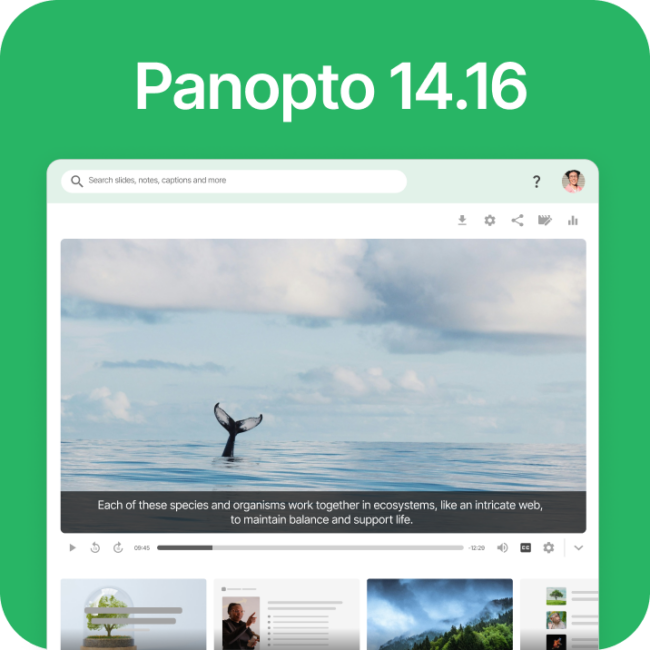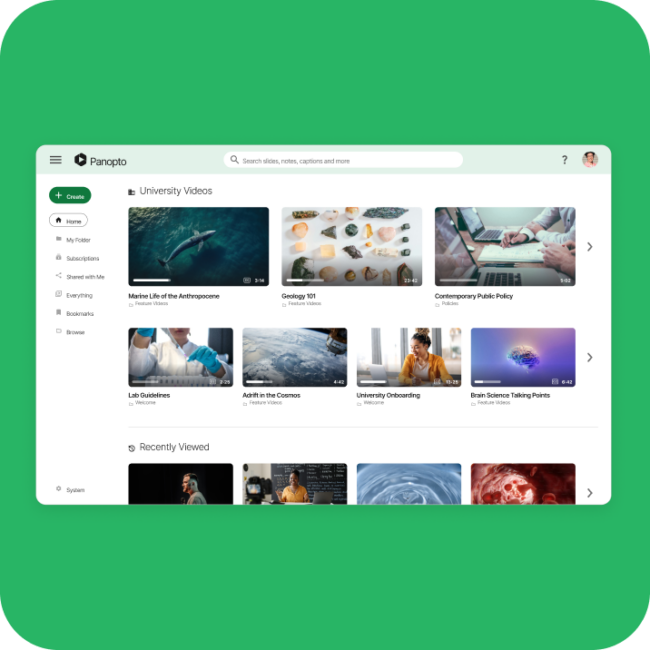Echo360 switch program
Get a Video Platform that works for you. Switch from Echo360 to Panopto.
Find out why you should choose Panopto over Echo360.
Understand the differences between a variety of VCMS platforms and see for yourself, how a switch to Panopto can benefit your organization.
- Simplicity: Features an easy-to-navigate platform that simplifies content creation and management, making it more user-friendly than Echo360.
- Customer Satisfaction: Demonstrates exceptional customer support and loyalty, clearly surpassing Echo360 in user satisfaction and retention.
- Dependability and Progress: Stands out for its reliability and advanced features, supported by strong global partnerships, contrasting with Echo360.
- Clear Pricing: Provides transparent, all-inclusive pricing, ensuring predictable costs without the surprises often found with Echo360’s pricing structure.
Choose the market leader.
Our dedicated switch programs help users of Echo360 and other video platforms to make a quick and simple switch to Panopto, enabling greater success and scaling.
To request a personalised demonstration of Panopto and see for yourself how quick and painless a change can be, simply by filling out this form:
Find out more about our other switch programs.
We offer competititve pricing to anyone, who wants to switch to Panopto. Find out more about the individual programs. Your current solution is not listed? No problem! Get in touch anyway and we will ensure to get you the best offer possible.
Find out more about how simple Panopto can make your life with world-class customer support and the most transparent pricing model in the industry.

Your organization deserves a robust approach to video learning, knowledge sharing and meeting intelligence. Panopto offers exactly that and more.

Reliability goes beyond product, it starts with the business behind it. Learn more about how Panopto is the most stable solution on the market.






